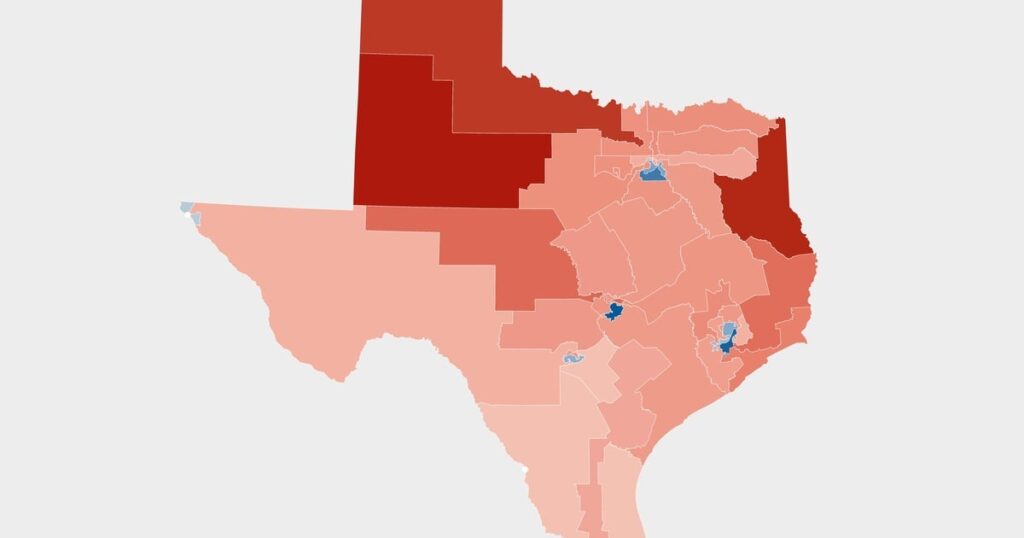Texas House Committee Approves New Republican-Favored Congressional Map
On Saturday, a Texas House panel moved forward with a proposed congressional map that seeks to add five additional districts favoring Republican candidates. This decision comes amidst significant outcry from Democratic lawmakers who argue the new map would undermine voting rights for communities of color. The state’s redistricting committee approved the map in a partisan 12 to 6 vote after a contentious hearing that included feedback from U.S. House Democrats and members of the public, many of whom voiced their opposition.
Redistricting Details and Party Motivations
The newly drafted map is positioned for consideration by the full Texas House as early as next week. Republican lawmakers have made it clear that the intent behind the redistricting effort is to enhance their electoral prospects, a sentiment explicitly articulated by Representative Todd Hunter, the Republican leading the initiative. “Different from everyone else, I’m telling you, I’m not beating around the bush,” Hunter declared. “We have five new districts, and these five new districts are based on political performance.”
This push for redistricting emerged partly due to pressures from former President Donald Trump’s political advisors, who insisted on map modifications to assist Republicans in preserving their slim House majority in anticipation of challenging midterm elections.
Changes to Current Districts
The proposed map, released on Wednesday, alters several districts in major cities including Houston, Austin, and Dallas. These revisions are expected to create five new districts that overwhelmingly supported Trump in the 2024 elections, where he captured 56.2% of the Texan vote. Currently, Republicans control 66% of the state’s 38 congressional seats, but the GOP aims to increase this to 79% with the new map.
Hunter emphasized that while “political performance does not guarantee electoral success,” it opens avenues for Republican candidates to contest these newly drawn districts.
Concerns Over Racial Gerrymandering
Amid the legislative discussions, Governor Greg Abbott added redistricting to the special session agenda, responding to a Justice Department letter indicating that four Texas districts were deemed unconstitutionally racially gerrymandered. However, Republican leaders maintained that their primary goal is not to address racial equity in districting but rather to solidify GOP control over congressional representation in Texas.
Critics, including Democratic Representatives Jasmine Crockett and Marc Veasey, have expressed concern that the proposed map systematically diminishes the electoral power of communities of color, fortifying majority-white districts. They argue that the map design fails to enable equitable representation and dilutes the voting strength of Black and Latino populations in Texas.
Table: Current vs. Proposed Congressional District Composition
| District Type | Current Map | Proposed Map |
|---|---|---|
| Majority White Districts | 22 | 24 |
| Majority Hispanic Districts | 10 | 11 |
| Majority Black Districts | 3 | 5 |
Looking Ahead
The controversy surrounding this new map is poised to escalate; should it pass, legal challenges could extend for months or even years, drawing scrutiny over its potential violation of the Voting Rights Act. As Democrats remain marginalized in this legislative process, they weigh options to obstruct the map’s passage, including potentially fleeing the state to deny the quorum necessary for a vote.
“This is not a Texas map. It is a Trump map,” asserted U.S. Rep. Lloyd Doggett. “It was imposed by President Trump, who has a stranglehold on Congress, and the only question here is whether he also has a stranglehold on this Texas Legislature.”

